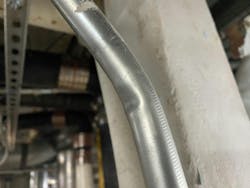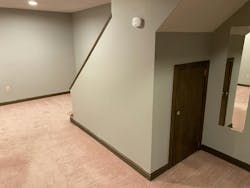How well do you know the Code? Think you can spot violations the original installer either ignored or couldn’t identify? Here's your chance to moonlight as an electrical inspector and second-guess someone else's work from the safety of your living room or office. Can you identify the specific Code violation(s) in this photo? Note: Submitted comments must include specific references from the 2023 NEC.
Hint: That’s some kooky EMT work.
Tell Them What They've Won…
Using the 2023 NEC, correctly identify the Code violation(s) in this month's photo — in 200 words or less — and you could win a $25 Amazon gift card. E-mail your response, including your name and mailing address, to [email protected], and Russ will select one winner (excluding manufacturers and prior winners) at random from the correct submissions. Note that submissions without an address will not be eligible to win.
May Winners
Our winner this month was Kevin Redman, an EC&M reader from Escondido, Calif. He knew there were receptacle outlets missing from this installation.
For kitchens, family rooms, dining rooms, parlors, libraries, dens, sunrooms, bedrooms, recreation rooms, and similar areas in dwelling units, Sec. 210.52(A)(1) requires receptacle outlets to be spaced so that no point along the floor line of any wall space is greater than 6 ft from a receptacle outlet. The wall space between the bottom stair and the door for the under-stair storage space has no receptacle outlets. This wall space is greater than 2 ft wide and is included in the requirements for 125V, 15A or 20A receptacle outlets as specified in Sec. 210.52(A)(2).
In lieu of installing receptacle outlets in the walls, Sec. 210.52(A)(3) permits receptacle outlets to be installed in or on floors. But that did not happen here either, leaving the occupants running extension cords for any TVs, computers, or any other electrical equipment they may want at this wall space. One of the main ideas behind Sec. 210.52 receptacle outlet requirements is to reduce the need for running extension cords.






